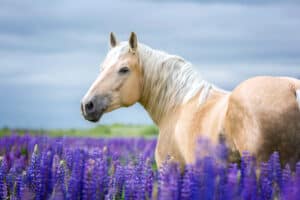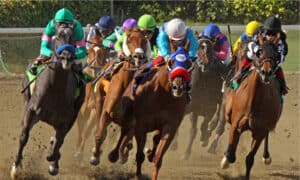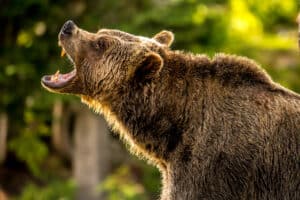Continue reading for our analysis...
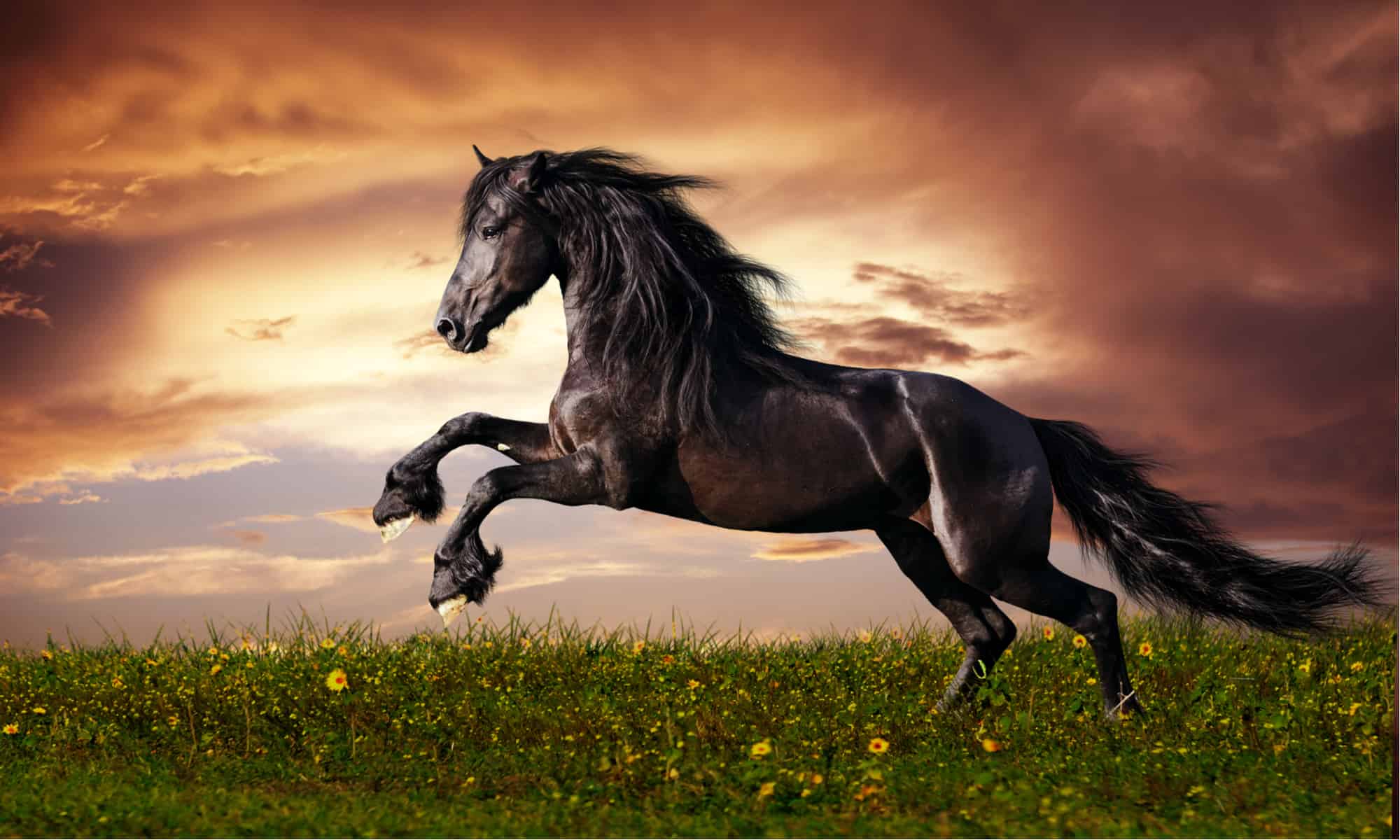
Paynes Prairie Preserve is Florida’s first state park. It’s open year-round and both locals and visitors can enjoy camping, bicycling, fishing, and hiking. They may also be privy to some unusual wild animal interactions — and if they have their phones with them, they may just be able to capture an unforgettable moment (to share with you!).
Do Wild Horses Travel Together?
Yes, wild horses roam together in small groups called bands (or herds). Typically, each herd consists of three to 10 wild horses. United mares along with their offspring make up the herd’s core. Wild horses are social animals and are also safer when traveling together.
Along with the mares and foals, there is usually an alpha stallion. In some bands, there is also a beta stallion. The lead mare has the responsibility of leading the band to forage and find watering holes. The alpha stallion is the defender of the herd, warding off potential threats.
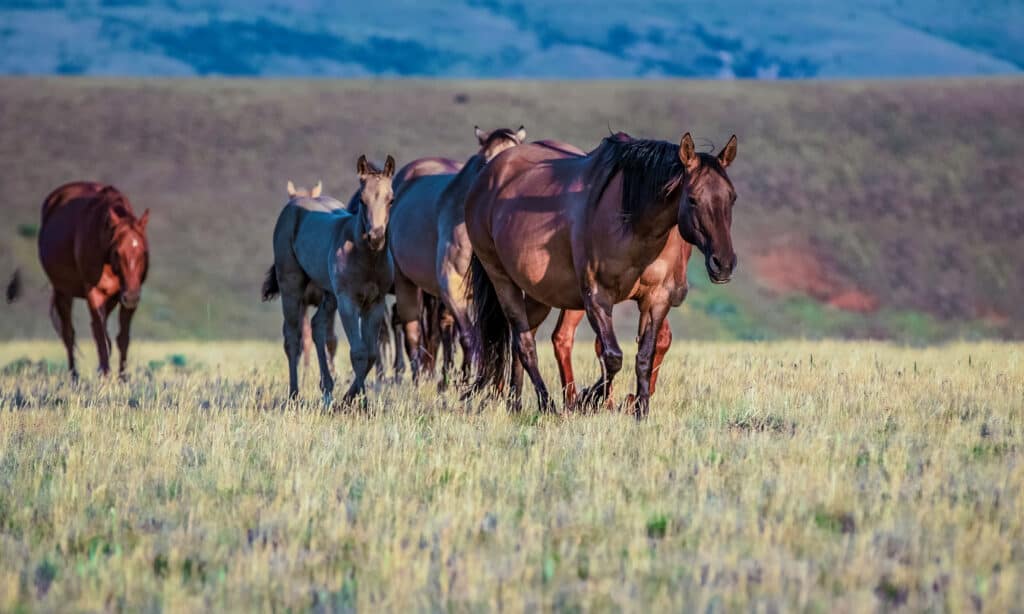
A group of horses traveling together is called a band (or herd).
©Christy berry/Shutterstock.com
Are Wild Horses Aggressive?
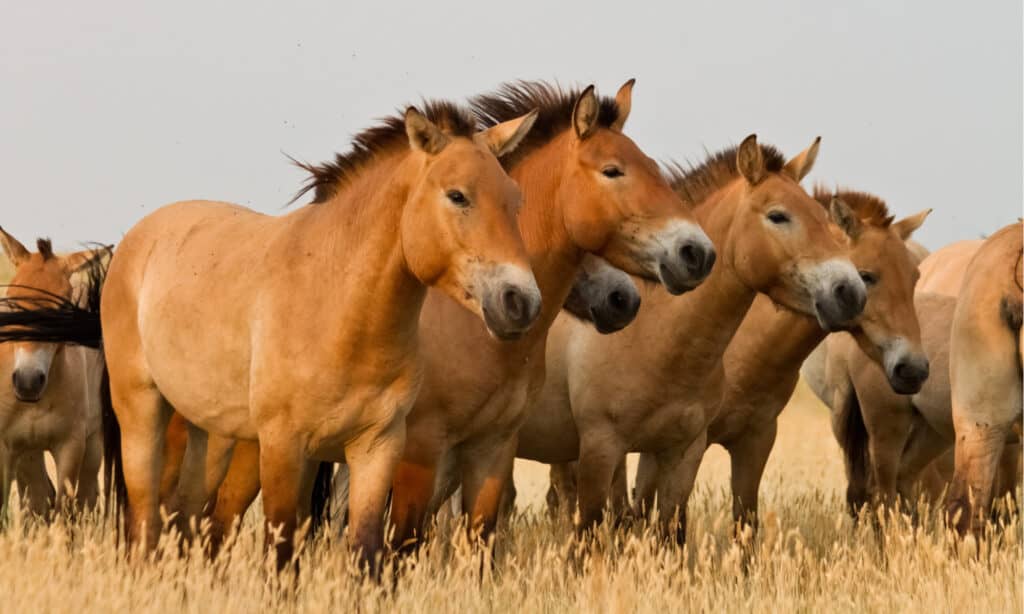
Wild horses generally flee when confronted with a threat
©Yantar/Shutterstock.com
Wild horses are prey animals — they fight as needed. Typically, their natural response to a threat is to run. However, in a situation when the threat is too close, wild horses use their bodies to attack. This is especially true if an alpha stallion fears his family may be in danger. They may move forward by charging the threat, following through with bites and kicks.
In this video, you can appreciate the protective nature of a stallion and can see how a band stick together. There’s a foal present, making the situation much more critical. The clip was shared by FOX13 News. Just as it starts, you see the stallion approaching a large alligator. It’s already reared up and in attack mode. It uses its hooves to stomp on the gator several times.
The alligator reacts to the immense pressure by twitching and trying to get away. The stallion does not feel the threat is gone and goes back toward the gator again for a few more stomps. This time, the gator manages to briefly clamp onto one of its legs, getting thrown sideways as it does so.
You can hear the horrified gasps of the onlookers as they fear the gator has injured the stallion. With the horse’s erratic kicks, it manages to get away from the gator and circles around it to get back to its band. It gallops normally without a limp, seemingly unfazed by the gator’s attack. At that point, the gator and stallion go in opposite directions, the stallion returning to its wild horse family, foal included.
Other Amazing Animals You Might Like
Crocodiles’ voracious appetites are legendary. Case in point, this massive predator which can be seen grasping the tail of a smaller member of its very own species. The smaller reptile tries to get away. But the giant is intent on having a meal of fresh crocodile and grasping it firmly, returns to the water, its prey wedged between those jaws.
Thank you for reading! Have some feedback for us? Contact the AZ Animals editorial team.



